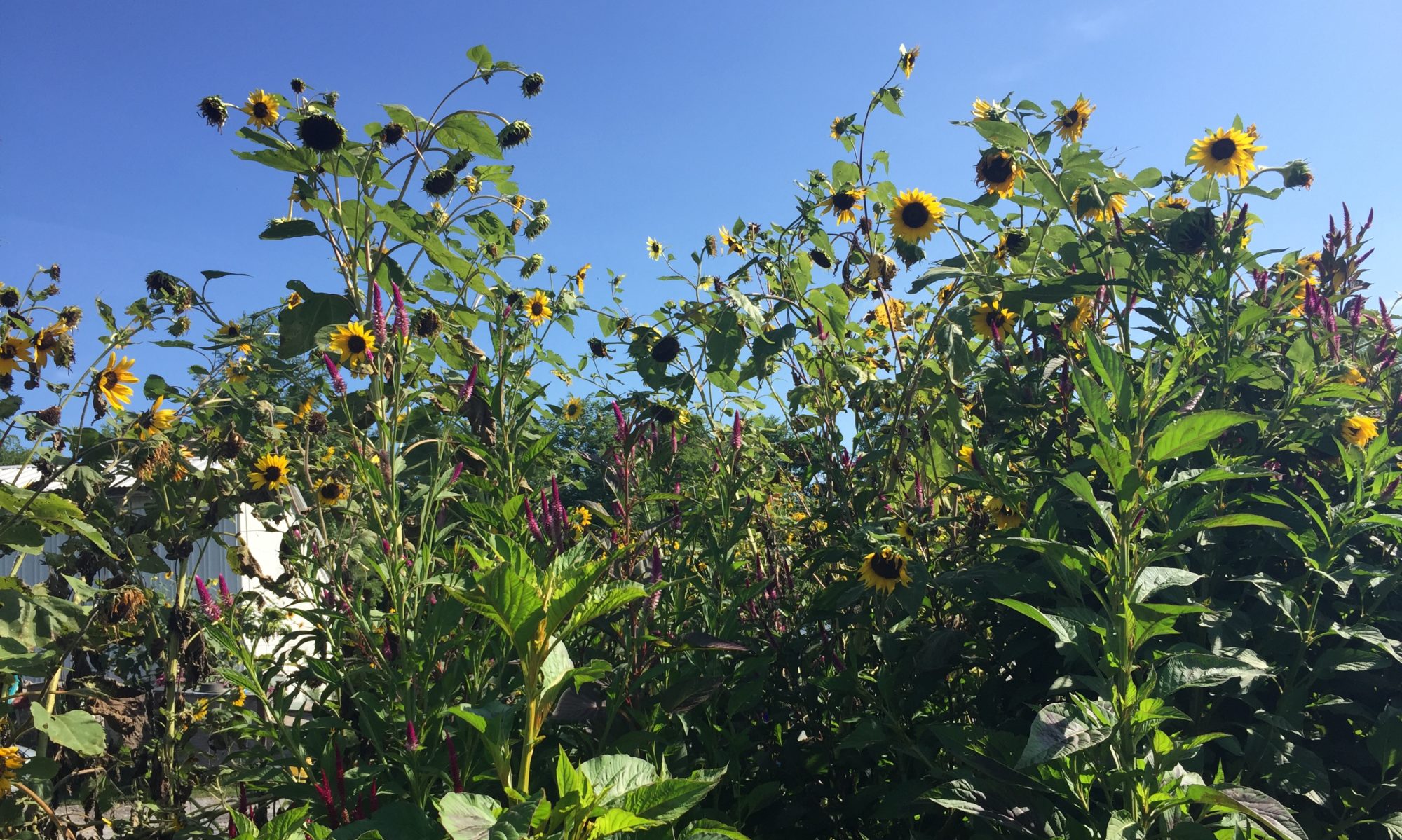
“It was a beautiful, bright autumn day, with air like cider and a sky so blue you could drown in it.” ~Diana Gabaldon, Outlander
This quote describes today perfectly! The sky is cerulean and the air is crisp with lingering warmth from the sun. It’s gorgeous outside and even inside, as I bask in a ray of noon-time sun.
Each day as a farmer is full of repetition and disruption. The two ends of the day are nearly a complete duplication as the chores don’t change much, but the activities during the day are always different.
My day generally starts sometime between 6-7:30 am. Usually I’m able to wake up without an alarm (this is totally awesome). After getting dressed, I start preparing feed for the chickens and ducks, which I keep in the house (for now). The feed is drained since it’s soaking in water and then I mix it with minerals, kelp, and fish meal for protein. I often put the food out for them early but don’t unlock their coops until 8:30/9, when Hammi the farm dog has had plenty of time to run and play, and hopefully scare off any lingering foxes.
Next, Hammi and I move on to the pigs. I prepare the food the night before, so I grab the buckets.. so many buckets… I can’t tell you how much feed exactly as it changes often but my back can tell you how much it weighs! The pigs learn quickly to separate themselves into their feeding areas. I try to lock adults into their own pens so there aren’t any squabbles. Teen pigs and piglets eat in groups. The little guys share feed troughs but later graduate to their own feed pans.
As the pigs eat, I go back up the hill to the feed room and prepare the afternoon feeding. Sometimes I have to refill my soaking bucket with new feed and water. I generally refill the it every 2-2.5 days, when they’ve gone through about ~80 lbs of grain. The drained pig feed is put into their buckets and mixed with pig minerals, kelp, and fish meal. This is also the time to add anything else needed. For instance, my boar has been limping and since he’s not keen on me examining his foot, I’ve been adding my CEEG tincture mix (link in this email) in case there’s an infection and turmeric to help with inflammation. As soon as I started adding these he began to limp less and now the limp is nearly gone after two weeks.
I return to the pigs to let them out of their pens and to make sure they’ve got clean water. Finally I go home to let the chickens and ducks out and to collect eggs. Hammi is locked in at this point so he doesn’t “retrieve” the birds for me.
Now it’s time to start the middle of my day. Sometimes I spend the day with my kids, like when we go to our homeschool co-op. If it’s nice or there is a pressing matter, I spend the day on farm chores, like fixing fences, updating pig huts, or sometimes even working on the new coop! Other days I work on creating batches of our Botanical products, and still other days I work on finances and paperwork. Once in a while I even clean my house…
The evening chore time changes drastically with the season. In the summer, I often forget to come inside until after 8. Right now I try to finish up feeding the pigs again by 6:30. In winter they’re fed at 4:30 pm! They’re ready to snuggle into their straw nests by then, and I’m ready to return to the woodstove’s warmth!
I enjoy the balance between routine and random. I love predictability but a prosaic life would bore me. Unexpected events and tasks get my brain working but I would not relish a life of uncertainty. Usually, I feel like my life is the right mix of both!










